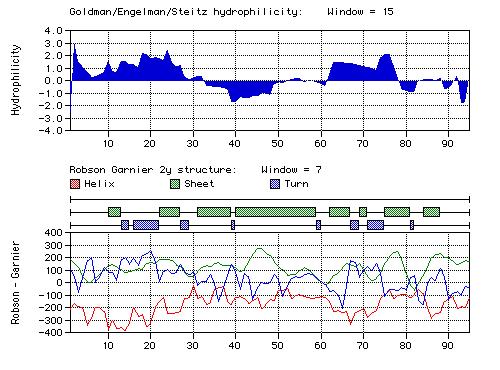

The first diagram indicates the hydrophilicity and the hydrophobicity of the predicted Genesis protein. Membranes in an aqueous environment have an attractive or repulsive response to water. The material composition of the membrane and its corresponding surface chemistry determine the interaction with water. This phenomenon is known as hydrophilicity (affinity for water) or hydrophobicity (little or no tendency to absorb water). In the diagram, blue ridges above zero indicate hydrophilicity; ridges below zero indicate hydrophobicity.
The second diagram compares the predicted folding pattern of the Genesis protein to another known protein to which it is similar: Chorion. Research in the database of the National Center for Biotechnology Information (which includes all known proteins in all catalogued life forms) indicates that the predicted structure of the Genesis protein is probably functionally related to the Chorion protein found in Ceratitis capitata (Mediterranean fruit fly), since it is 39% similar to it. The coincidence (in structural similarity between Genesis and the Chorion protein) is particularly significant in the context of the transgenic artwork Genesis, since Chorion is the protein that forms the membrane which serves mainly as a protective barrier for a developing embryo.
Diagrams courtesy of Dr. Murray Robinson, Amgen Inc.
For information on the three-dimensional structure of the Genesis protein, please click here.
Back to Kac Web